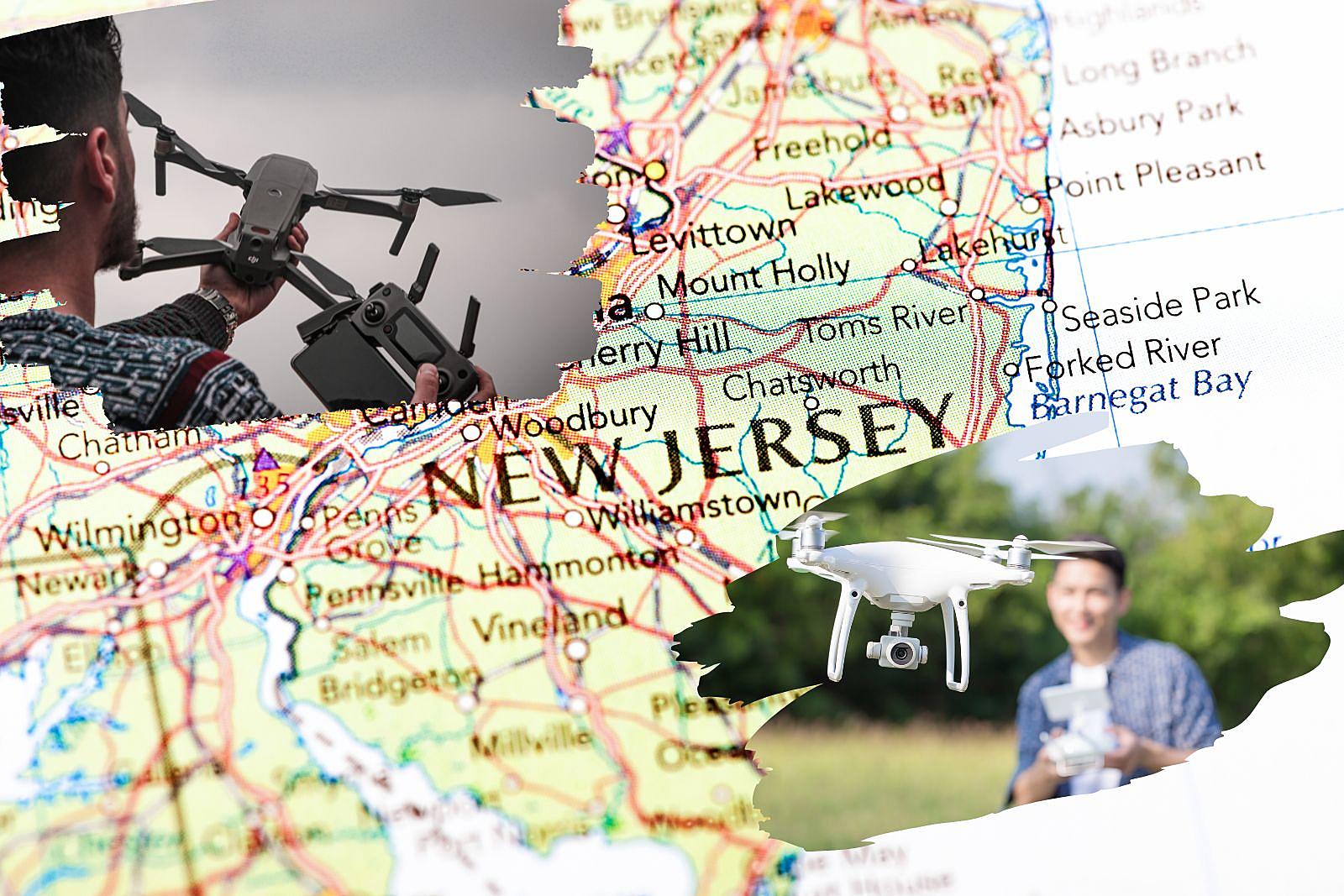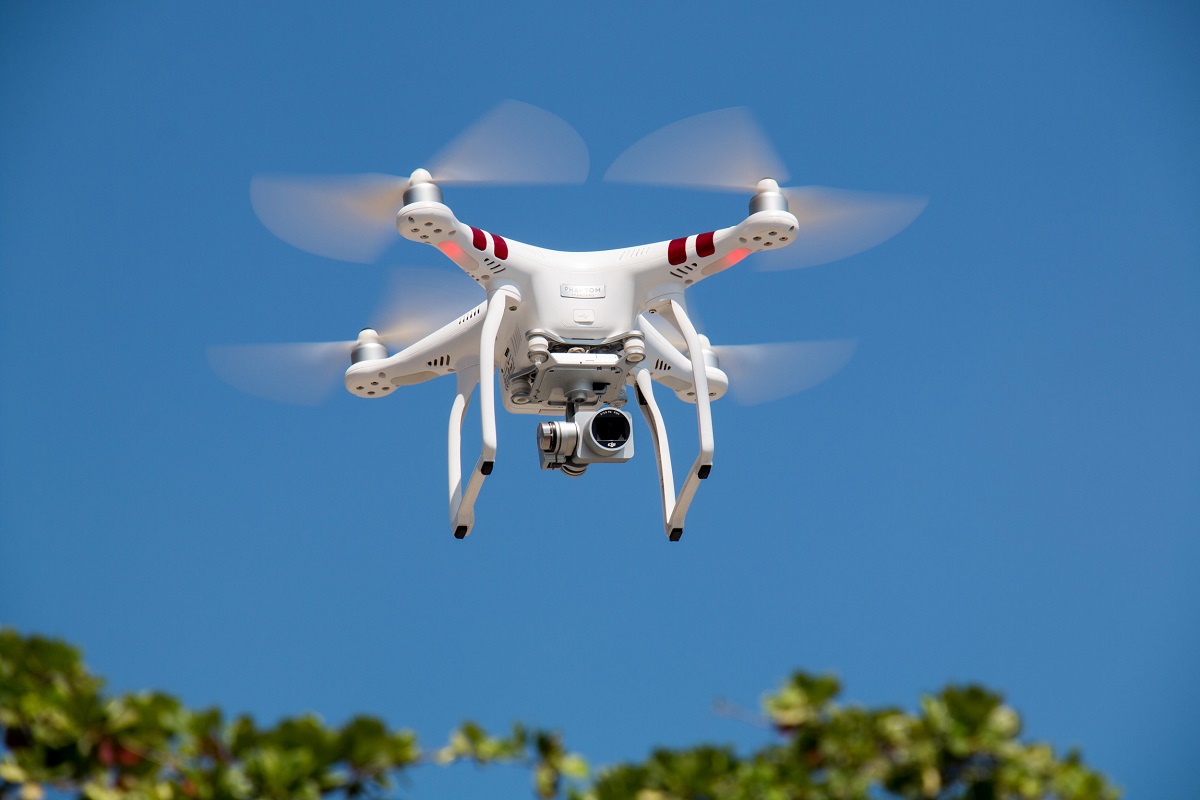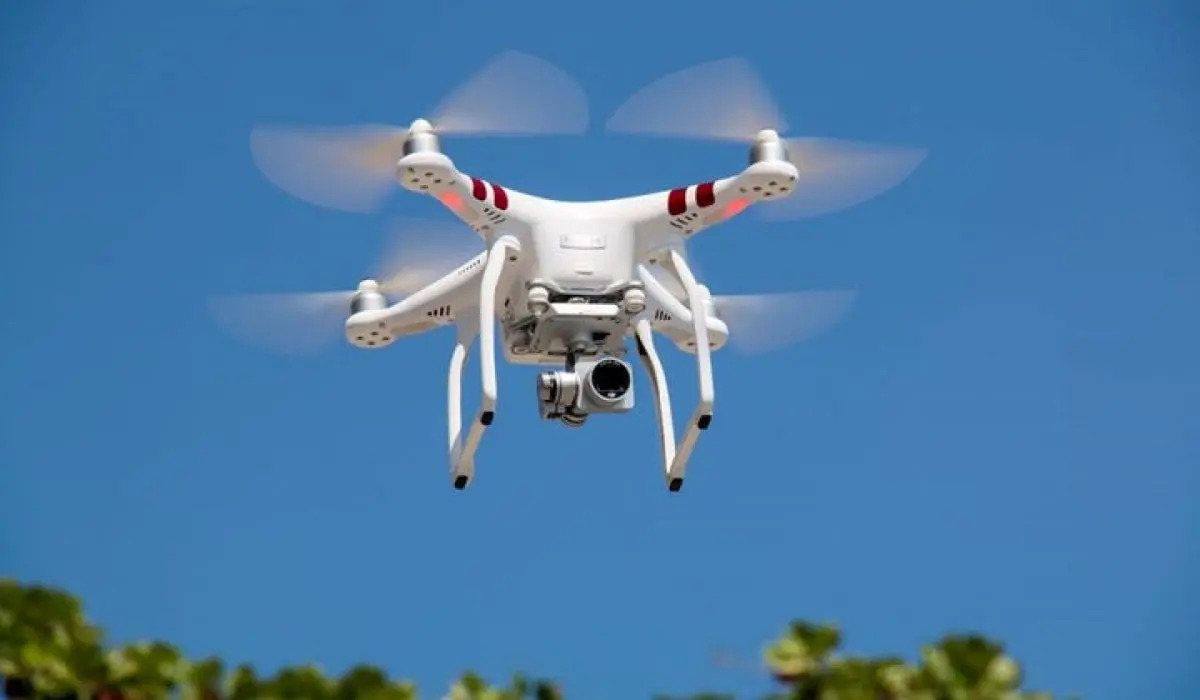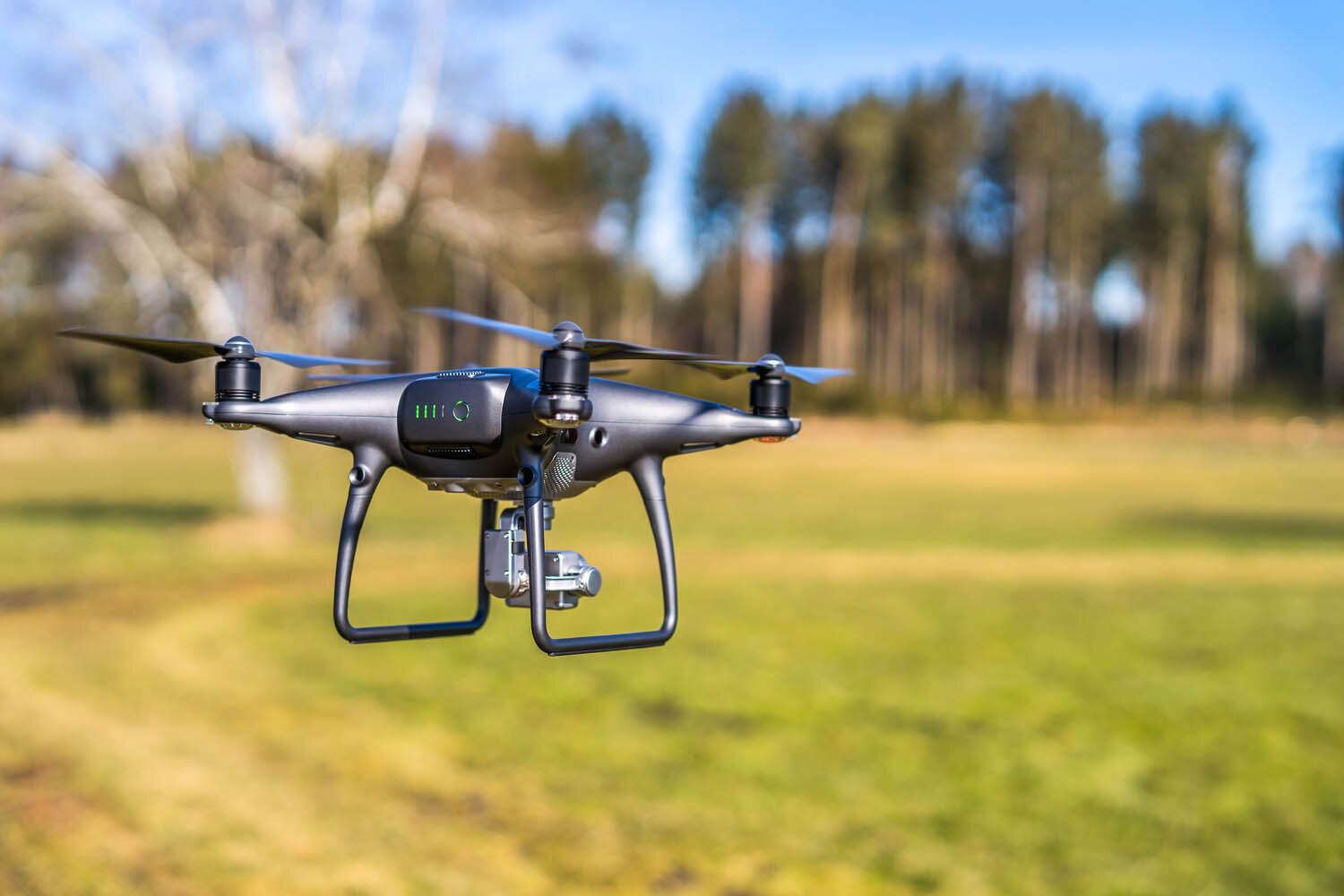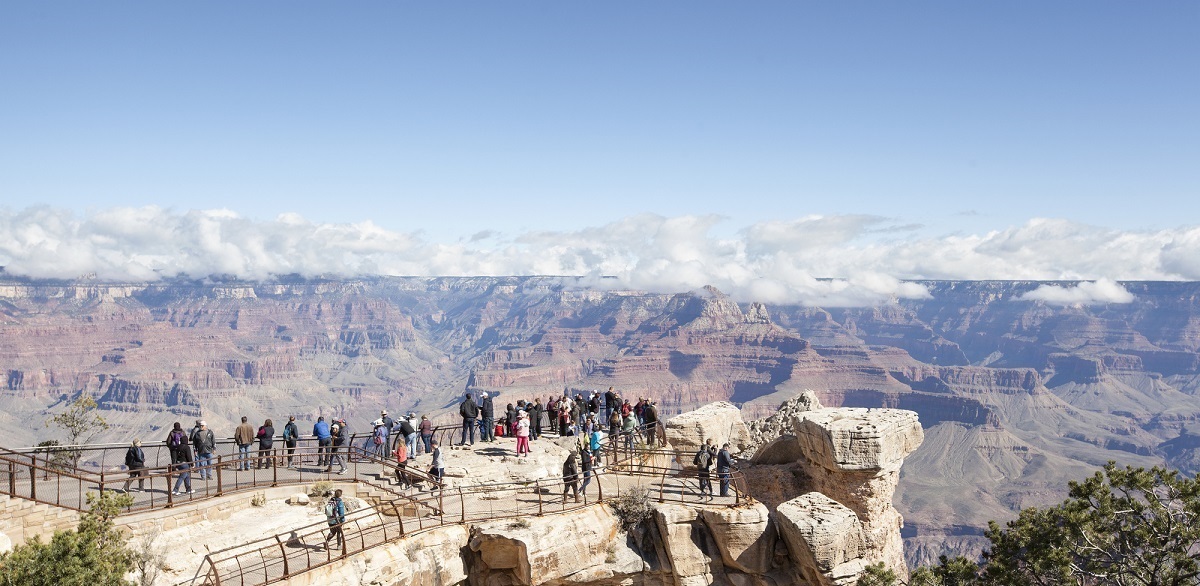Introduction
So you’ve got yourself a drone and you’re excited to take it for a spin in a national park. Flying a drone can be a thrilling experience, allowing you to capture breathtaking aerial shots of beautiful landscapes. However, it’s important to understand that flying a drone in a national park comes with its own set of rules and regulations.
Before you embark on your drone adventure, it’s crucial to familiarize yourself with the specific policies of the national park you plan to visit. Each park may have its own guidelines regarding drone usage, and it’s your responsibility to adhere to them to ensure the safety of wildlife, visitors, and the park itself. By following the rules and flying responsibly, you can enjoy a positive drone experience while respecting the environment.
In this guide, we’ll provide you with all the information you need to fly a drone in a national park. We’ll discuss the rules and regulations, choosing the right location, planning your flight, pre-flight checklists, and flight etiquette. We’ll also provide photography and videography tips, safety considerations, and a list of dos and don’ts to keep in mind while operating your drone in a national park.
By the end of this guide, you’ll be well-prepared to have a safe and enjoyable drone experience in a national park, capturing stunning aerial imagery while being a responsible drone pilot.
Understanding the Rules and Regulations
Before you take your drone to a national park, it’s crucial to understand the rules and regulations governing their use. National parks have specific guidelines in place to protect the environment, wildlife, and visitors. Failure to comply with these regulations can result in fines, damage to the park, and harm to wildlife.
The first step is to research and familiarize yourself with the specific rules of the national park you plan to visit. Most parks have websites or visitor centers where you can find detailed information about drone usage. Some parks may have designated areas where drones are allowed, while others may have restrictions on flying altogether.
One common rule is to follow the Federal Aviation Administration (FAA) guidelines for unmanned aircraft systems. This includes flying your drone below 400 feet, keeping it within visual line-of-sight, and avoiding flying over people.
Additionally, national parks have regulations in place to protect wildlife and minimize disturbance. It’s essential to keep a safe distance from wildlife and avoid flying near nesting sites or sensitive areas. Some parks may have specific restrictions during sensitive wildlife mating seasons or nesting periods.
Another important consideration is obtaining the necessary permits or permissions. Some national parks require you to apply for a special use permit or a film permit if you plan to use your drone for commercial purposes or capture footage for a project. Make sure to check the park’s requirements and obtain the necessary permits well in advance.
Lastly, always be respectful of other visitors in the park. Avoid flying your drone in crowded areas or areas where people may feel uncomfortable. Be aware of your surroundings and practice good drone etiquette to ensure a positive experience for everyone.
Understanding and following the rules and regulations set by the national park is of utmost importance. By doing so, you not only protect the park and its wildlife but also help preserve this natural treasure for future generations to enjoy.
Choose the Right Location
When flying your drone in a national park, selecting the right location is crucial. Not every area of the park may be suitable for drone flight, and it’s essential to choose a location that aligns with the park’s guidelines and your intentions.
Start by thoroughly researching the national park and identifying areas that allow drone usage. Some parks may have designated flying zones or recommend specific locations for drone flights. Take the time to learn about these areas and choose one that aligns with your desired shots and the park’s regulations.
Consider the type of landscape you wish to capture and how it complements the park’s natural features. Look for breathtaking scenery, unique viewpoints, or areas that showcase the park’s diverse ecosystems. By selecting the right location, you can capture stunning aerial shots that truly highlight the beauty of the national park.
It’s important to consider the safety of your drone flight as well. Choose an area that provides sufficient space, away from obstacles such as trees, powerlines, or buildings. Open spaces with few or no people around are ideal for drone flights, reducing the risk of accidents or disruptions.
Furthermore, be mindful of the environmental impact of your drone flight. Avoid sensitive areas, such as fragile ecosystems, wildlife habitats, or areas prone to erosion. Drones can disturb wildlife and cause damage to delicate terrain, so it’s crucial to choose a location that minimizes these risks.
It’s also worth noting the weather conditions at the chosen location. Strong winds, rain, or extreme temperatures can affect your drone’s performance and pose a safety risk. Check the weather forecast and choose a day with favorable conditions for a smooth and enjoyable flight.
Before heading out to the park, make sure to communicate your plans with park rangers or staff. They can provide valuable information about any temporary restrictions, closures, or hazards you should be aware of. Additionally, they may offer suggestions on lesser-known, off-the-beaten-path locations that offer unique perspectives for your drone flight.
By choosing the right location, you can ensure a successful and responsible drone flight in a national park. Capture stunning footage while respecting the park’s regulations and preserving its natural beauty for future generations to enjoy.
Plan Your Flight
Proper planning is key to a successful and enjoyable drone flight in a national park. By taking the time to plan your flight, you can maximize safety, capture stunning footage, and minimize disruptions to wildlife and other park visitors.
Start by identifying the objectives of your drone flight. What type of footage or photographs do you hope to capture? Are there specific areas or landmarks you want to focus on? Think about the story you want to tell with your drone footage and plan your flight accordingly.
Next, familiarize yourself with the park’s regulations and any restrictions on drone flight. Review the guidelines and understand the limitations in terms of altitude, distance from people and animals, and areas where drones are not allowed. This information will help you plan your flight path and ensure compliance with the park’s rules.
Use maps or aerial imagery to scout the location in advance. Identify potential launch and landing spots, as well as any potential obstacles or hazards in the area. This will help you plan your flight path and make adjustments if necessary.
Consider the time of day and lighting conditions for your flight. The early morning and late afternoon often offer the best lighting for capturing stunning aerial photographs or videos. Take into account the movement of the sun and how it will affect the shadows and overall quality of your footage.
Think about the duration of your flight and plan accordingly. Make sure you have enough battery life to capture the footage you desire and return safely to the landing spot. If needed, bring spare batteries or a portable charger to extend your flight time.
Furthermore, be mindful of the impact your drone may have on wildlife and other park visitors. Avoid flying close to nesting sites, roosting areas, or areas where sensitive animals may be present. Respect the natural environment and maintain a safe distance from any wildlife encounters.
Prior to your flight, it’s essential to perform a thorough pre-flight checklist. Ensure that your drone is in proper working condition, all components are securely attached, and the firmware and software are up to date. Check the weather conditions and any temporary flight restrictions that may be in place.
By carefully planning your flight, you’ll be able to make the most of your drone’s capabilities while respecting the park’s rules. Capture stunning imagery, showcase the park’s beauty, and create a memorable experience while preserving the environment for future visitors.
Pre-Flight Checklist
Before you take off with your drone in a national park, it’s important to perform a thorough pre-flight checklist to ensure a safe and successful flight. Following these steps will help prevent any unwanted issues and ensure that your drone is in optimal condition before taking to the skies.
1. Check the battery: Ensure that your drone’s battery is charged to its full capacity. It’s also a good idea to bring a spare battery or two, especially if you plan on an extended flight or capturing a lot of footage.
2. Inspect the drone: Carefully examine your drone for any signs of damage or loose parts. Check the propellers, landing gear, and any other external components to ensure everything is securely in place.
3. Firmware and software updates: Make sure that your drone’s firmware and accompanying software are up to date. Manufacturers often release updates that address certain issues or enhance performance.
4. Camera settings: Set your camera to the desired resolution, frame rate, and any other specific settings based on the type of footage or photographs you plan to capture. This will ensure that you achieve the desired results during your flight.
5. Perform a pre-flight test: Before taking off, conduct a brief test by hovering your drone close to the ground. Observe its stability, responsiveness to controls, and overall performance. If there are any abnormal behaviors or issues, address them before proceeding with your flight.
6. Check the weather conditions: Assess the weather conditions at the location where you plan to fly. Avoid flying in strong winds, rain, or any other adverse weather conditions that may affect the stability and control of your drone.
7. Verify GPS signal: Ensure that your drone has a strong GPS signal before taking off. This will help with stability, positioning, and the Return-to-Home feature in case of an emergency.
8. Plan the flight path: Familiarize yourself with the flight path you intend to take. Identify any potential obstacles or hazards and plan alternative routes if needed. Always be aware of your surroundings and keep a safe distance from people, wildlife, and any restricted areas.
Remember, the pre-flight checklist is an essential part of responsible drone operation. By following these steps, you’ll minimize the risks of accidents or technical issues during your flight, ensuring a safe and enjoyable experience in the national park.
Takeoff and Landing
Mastering the takeoff and landing process is crucial for a safe and controlled drone flight in a national park. By following proper procedures and practicing good techniques, you can ensure a smooth and successful flight experience.
1. Choose a suitable takeoff and landing area: Select a flat and clear area for both takeoff and landing. Avoid areas with tall grass, uneven terrain, or potential obstacles that may interfere with the drone’s propellers or landing gear.
2. Perform a pre-flight check: Before takeoff, double-check that all components of your drone are securely attached, the battery is fully charged, and the camera settings are optimized for your flight. Make sure the GPS signal is strong and the drone’s firmware and software are up to date.
3. Calibrate the compass: If necessary, calibrate your drone’s compass according to the manufacturer’s instructions. This step helps ensure accurate heading and navigation during the flight.
4. Hold the drone steadily: Place the drone on a flat surface and hold it firmly with both hands. Keep your fingers away from the propellers to avoid any accidents. Make sure the drone is powered on and connected to the remote control.
5. Slowly increase the throttle: Gradually increase the throttle to lift the drone off the ground. Pay attention to the drone’s response and adjust the throttle accordingly. Maintain a steady ascent to avoid any sudden maneuvers that may destabilize the drone.
6. Monitor the surroundings: Keep a constant eye on your surroundings to ensure a safe flight. Look out for any obstacles or potential hazards such as buildings, trees, or wildlife. Adjust the altitude and position of your drone accordingly to maintain a safe distance.
7. Control the flight: Use the remote control to navigate your drone, keeping it within visual line-of-sight. Familiarize yourself with the control settings and practice smooth and controlled movements. Avoid abrupt or jerky maneuvers that may compromise stability.
8. Plan the landing approach: As you prepare to land, find a suitable landing spot that meets the criteria mentioned earlier. Plan a gentle descent, adjusting the throttle and controls as necessary. Keep the drone steady and slowly bring it down to the ground.
9. Power down the drone: Once your drone has safely landed, power it down by reducing the throttle to zero. Disconnect the battery and secure all components for transportation.
By mastering the takeoff and landing process, you’ll have better control over your drone and minimize the risk of accidents or damage. Practice these steps and ensure a safe flight experience while capturing stunning aerial imagery within the boundaries of the national park.
Flight Etiquette
When flying your drone in a national park, it’s important to practice good flight etiquette to ensure the safety and enjoyment of everyone in the park. By following these guidelines, you can maintain a positive experience and minimize any disturbances to wildlife, other visitors, and the park’s natural environment.
1. Respect the park’s rules and regulations: Familiarize yourself with the specific rules and guidelines for drone usage in the national park you plan to visit. Comply with these regulations to protect the park, wildlife, and other visitors.
2. Fly within your visual line-of-sight: Always keep your drone within your visual range during the flight. This ensures that you can see and avoid any potential obstacles, wildlife, or other drones in the area.
3. Fly at a considerate altitude: Maintain a reasonable altitude during your flight to minimize the impact on wildlife and the peace and tranquility of the park. Flying too low or too high can disrupt the natural environment and disturb both wildlife and other park visitors.
4. Avoid flying over people: To avoid any potential accidents or privacy concerns, steer clear of flying your drone directly above crowds or individuals. Maintain a safe distance to ensure the safety and comfort of park visitors.
5. Be aware of wildlife: National parks are home to a diverse range of wildlife. Be mindful of their presence and avoid disturbing or causing stress to animals during your flight. Refrain from flying near nesting sites, roosting areas, or areas where sensitive wildlife may be present.
6. Minimize noise and disruption: Drones can be noisy, which can potentially disrupt the peace and tranquility of the park. Consider using propeller guards or quiet propellers to reduce noise levels and be respectful of other park visitors.
7. Be courteous and informative: If other park visitors approach you with questions or concerns about your drone flight, be proactive in providing information and educating them about your responsible flying practices. This helps build a positive image for drone enthusiasts and promotes understanding.
8. Follow park-specific guidelines for photography and videography: Some national parks may have additional guidelines for photography and videography, especially for commercial purposes. Familiarize yourself with these guidelines and obtain any necessary permits before capturing footage for commercial projects.
By adhering to these flight etiquette guidelines, you can have a positive and responsible drone flying experience in a national park. Respect the park’s rules, wildlife, and other visitors, and help create a harmonious environment where everyone can appreciate the beauty of nature.
Photography and Videography Tips
When flying your drone in a national park, capturing stunning aerial photographs and videos can be a rewarding and creative experience. Here are some tips to help you make the most of your drone’s photography and videography capabilities:
1. Plan your shots: Before taking off, determine the specific shots or footage you want to capture. Think about the composition, framing, and storytelling aspect of the images or videos. This will help you focus on capturing captivating and purposeful content.
2. Use manual settings: Take advantage of your drone’s manual settings to have greater control over exposure, shutter speed, and ISO. Adjust these settings according to the lighting conditions and the desired mood or effect you want to achieve.
3. Experiment with different perspectives: Drones provide unique perspectives not easily attainable from the ground. Explore different angles, altitudes, and camera movements to capture breathtaking and dynamic shots. Move closer to your subject or fly higher to showcase the vastness of the national park.
4. Utilize the rule of thirds: Apply the rule of thirds by mentally dividing your frame into a grid of nine equal sections. Position key elements of interest along these lines or at their intersections to create visually engaging and balanced compositions.
5. Incorporate leading lines: Look for natural or man-made leading lines such as rivers, roads, or trails that guide the viewer’s eye through the frame. These lines can add depth and guide attention to the main focal points of your photograph or video.
6. Capture the golden hour: The golden hour, which occurs during the hour after sunrise or before sunset, offers soft, warm lighting that can enhance the beauty of your shots. Plan your flights during these times to capture the park in its most magical light.
7. Experiment with camera movements: Explore the various camera movements your drone offers, such as tilting, panning, and tracking shots. These movements can add dynamism and cinematic appeal to your videos, creating a visually captivating experience.
8. Edit your footage: After your flight, process and edit your photographs and videos to enhance colors, contrast, and clarity. Use editing software to fine-tune the visual aesthetics and bring out the true beauty of the scene.
Remember, as you capture striking imagery with your drone, be mindful of the park’s guidelines and regulations. Respect the environment, wildlife, and other visitors while creating memorable and impactful visuals that showcase the unique wonders of the national park.
Safety Tips
Safety should always be a top priority when flying a drone in a national park. By following these safety tips, you can minimize risks, prevent accidents, and ensure a safe and enjoyable drone flight:
1. Know your drone and its capabilities: Familiarize yourself with the specifications, features, and flight characteristics of your drone. Read the user manual thoroughly and understand how to operate it safely.
2. Check the weather conditions: Always check the weather forecast before flying your drone. Avoid flying in strong winds, rain, or other adverse weather conditions that may affect stability and control.
3. Maintain line-of-sight: Keep your drone within your visual line-of-sight throughout the flight. This ensures that you can see any obstacles, wildlife, or other potential hazards and make necessary adjustments to avoid them.
4. Stay away from airports and aircraft: Keep a safe distance from airports, helipads, or other areas where aircraft take off or land. Flying near these areas is not only dangerous but also illegal and may result in fines or legal consequences.
5. Respect other park visitors: Be considerate of other park visitors and their privacy. Avoid flying over crowds or individuals, as it may cause discomfort or potentially dangerous situations.
6. Be mindful of wildlife: Avoid flying your drone near wildlife or nesting sites. Drones can cause stress to animals and disrupt their natural behavior. Maintain a safe distance to ensure their well-being.
7. Fly within regulations: Familiarize yourself with the specific rules and regulations governing drone usage in the national park. Adhere to these guidelines and stay informed about any temporary flight restrictions that may be in place.
8. Emergency procedures: Be prepared for emergencies by understanding the emergency procedures for your drone. Learn how to initiate a safe landing in case of low battery or loss of signal. Practice emergency scenarios to be ready for unexpected situations.
9. Inspect your equipment: Before each flight, thoroughly inspect your drone and its components. Check for any loose connections, damaged propellers, or other signs of wear. Periodically calibrate your drone’s compass and ensure all firmware and software are up to date.
10. Fly with a spotter: If possible, have a second person act as a spotter during your drone flights. They can help monitor the surroundings, watch for potential hazards, and provide assistance if needed.
By following these safety tips, you can enjoy a safe and responsible drone flight in a national park. Prioritize safety above all else to protect yourself, others, and the natural environment while capturing stunning imagery from a unique perspective.
Dos and Don’ts in National Parks
When exploring and flying your drone in a national park, it’s important to be mindful of the do’s and don’ts to ensure that you have a positive and responsible experience. Here are some guidelines to follow:
Do:
1. Do your research: Familiarize yourself with the specific rules and regulations of the national park you plan to visit. Understand where drones are allowed, any flight restrictions, and any specific guidelines for drone usage.
2. Do obtain necessary permits: If applicable, obtain any necessary permits or permissions for drone usage in the national park, especially if you plan to use the footage for commercial purposes. Ensure that you have all the required documentation in order.
3. Do fly responsibly: Follow safe and responsible flying practices, including maintaining line-of-sight, flying within regulations, and respecting the privacy and safety of others. Be aware of your surroundings and adjust your flight path accordingly to avoid potential hazards.
4. Do respect wildlife: Maintain a safe distance from wildlife and avoid disturbing their natural behavior. Do not fly your drone near nesting sites, roosting areas, or sensitive habitats. Your presence should not cause stress or harm to the park’s wildlife.
5. Do be considerate of other visitors: Respect the experience and privacy of other park visitors. Avoid flying your drone over crowds or individuals, and always be mindful of their comfort and safety. Be a responsible and courteous drone pilot.
6. Do capture and share responsibly: Use your drone to capture stunning imagery and share the beauty of the park responsibly. Make sure the content you capture promotes the conservation and appreciation of the national park without causing harm or disruption.
Don’t:
1. Don’t fly near restricted areas: Observe any restricted areas or no-fly zones within the national park. Avoid flying your drone in these areas, as they are designated for the safety and preservation of the park and its resources.
2. Don’t fly recklessly or negligently: Maintain control of your drone at all times and avoid reckless flying behaviors. Do not fly your drone in prohibited or dangerous areas, and do not perform dangerous stunts or maneuvers that may jeopardize the safety of others.
3. Don’t disturb or harm wildlife: Do not intentionally harass or chase wildlife with your drone. Respect the natural habitats and behaviors of the park’s wildlife, and avoid any actions that may cause harm or unnecessary stress to these animals.
4. Don’t fly in poor weather conditions: Avoid flying your drone in inclement weather conditions such as strong winds, rain, or fog. These conditions may affect the stability and control of your drone, increasing the risk of accidents or damage.
5. Don’t ignore park guidelines: Always adhere to the specific guidelines and rules set by the national park regarding drone usage. Ignoring these guidelines can lead to fines, legal consequences, or negative impacts on the park and its resources.
By following these dos and don’ts, you can be a responsible and respectful drone pilot in a national park. Enjoy your flights, capture amazing footage, and contribute to the preservation and appreciation of these treasured natural environments.
Conclusion
Flying a drone in a national park can be an incredible experience, allowing you to capture breathtaking aerial shots and immerse yourself in the natural beauty of these protected areas. However, it’s important to approach drone usage in national parks with responsibility, respect, and adherence to the rules and regulations.
In this guide, we have explored essential aspects of flying a drone in a national park, from understanding the rules and regulations to choosing the right location, planning your flight, and practicing flight etiquette. We’ve also provided tips for photography, videography, safety, and dos and don’ts to ensure a positive and responsible drone experience.
As drone enthusiasts, it is our responsibility to protect and preserve the environment, wildlife, and the experiences of other park visitors. By following the guidelines discussed in this guide, you can enjoy a safe and enjoyable drone flight while minimizing your impact on the park and its inhabitants.
Remember to always research the specific rules and regulations of the national park you plan to visit. Obtain any necessary permits, fly responsibly and be considerate of others, respect wildlife and their habitats, and maintain a focus on conservation and appreciation as you capture stunning footage.
By embracing these principles and incorporating them into your drone flights, you can create memorable aerial imagery while contributing to the preservation and enjoyment of our precious national parks.











